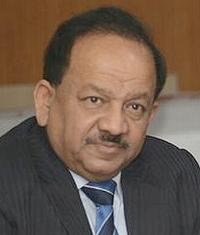India Blames Climate Change for Heat Wave Deaths
NOIDA, India, June 2, 2015 (ENS) – Soaring temperatures in three Indian states over the past week have claimed the lives of about 2,330 people, mostly construction workers, the elderly or the homeless, officials say.
The hardest hit states are Andhra Pradesh on the India’s southeast coast, the neighboring inland state of Telangana, and Odisha to the north.

A girl enjoys a few drops of precious water, June 1, 2015. (Photo by Himanshu Tyagi / Relief India Trust)
The whole country is counting the days to the onset of the annual cooling monsoon rains, which are about a week late and are forecast to bring less than average rainfall.
Today, India’s Minister for Earth Sciences Dr. Harsh Vardhan described the ongoing extreme heat situation and deficient monsoon rains as “manifestations of climate change.”
“World leaders are already speaking out on the link between freaky weather and climate change. So, let us not fool ourselves that there is no connection between the unusual number of deaths from the ongoing heat wave and the certainty of another failed monsoon,” said Dr. Vardhan.
Dedicating the country’s new high performance computing facility “Bhaskara” at the National Centre for Medium Range Forecasting in Noida today, Dr. Vardhan told reporters that the most recent long range monsoon forecast indicates that rainfall for India as a whole is likely to be 88 percent less than the average.

India’s Minister of Science and Technology Dr. Harsh Vardhan (Photo by British High Commission)
Forecasters with the India Meteorological Department, IMD, predict the rains will begin around Friday, June 5 and that there is a 93 percent probability of a weak monsoon.
Dr. Vardhan said, “I am a man of science and cannot be blind to the fact that both the south-west and north-east monsoons failed in 2014.”
“For 2015, today the IMD’s prediction of an overall 93 percent probability of a weak monsoon is a worrying cause for all of us,” he said.
He pointed out that the Indian monsoon is known to be heavily dependent on oceanic, atmospheric and land surface conditions. The drastic changes brought about through change of the character of land and resultant atmospheric pollution are definitely influencing the monsoon.
“Scientists till now had not considered the local implications of global change. Think global, act local is happening now,” he advised.
The Ministry of Earth Sciences has acquired cutting edge capacity for predicting monsoons. A polar remotely operated vehicle was put to work in the glaciers of northern Antarctica. Through the reading of currents there it is possible to understand the south-west monsoon better.
“Bhaskara,” is a part of the Earth System Science Organisation of the Ministry of Earth Sciences. It is expected to enhance prediction of tropical cyclones, heavy rainfall events, cloudburst events and monsoons, using very high resolution regional models.
Dr. Vardhan said, “I am aware that the reliability of weather forecasting is gradually improving now. However, in coming years it will improve further with development of new technology and its effective use. The increased uncertainty associated with the prediction is in itself a sign of climate change.”
Periodic heat waves afflict India just before the monsoon rains. In early June 12 years ago, the death toll from a heat wave sweeping the country surpassed 1,200.
Copyright Environment News Service (ENS) 2015. All rights reserved.
http://ens-newswire.com/2015/06/02/india-blames-climate-change-for-heat-wave-deaths/